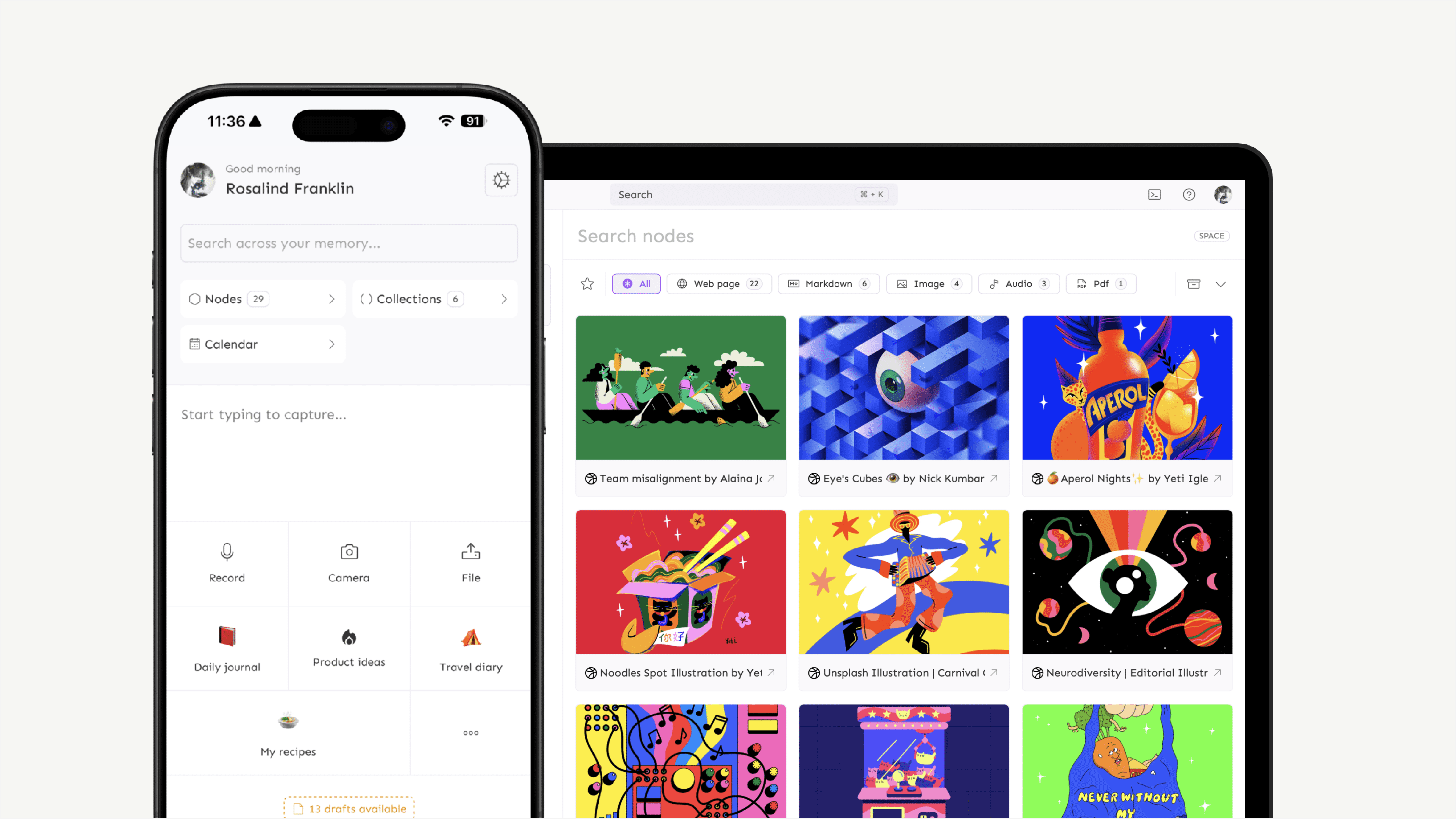Memotron - Digital memory atlas
A digital atlas for memory that helps users capture,
curate, and connect knowledge seamlessly across devices

Sole Product Designer - Feature Scoping, User Research, Interaction Design, Prototyping, UI Design
Team
Aravind - Founder & Engineer
Fuzail - Engineer
Timeline
Feb 2024 – Present
01/06
Context
What would it take to design a memory system that feels as natural as remembering itself?
That question arose not from a missing feature, but from observing persistent invisible friction in user’s workflows. We’ll go deeper into that problem next.
This short case study focuses on the desktop app, with the same design principles carried over to mobile
02/06
Problem
Most tools in the PKM space weren’t designed as memory systems they grew feature by feature, often driven by user requests. That’s where the gap begins. From early user interviews, usage tracking, and friction logs, these recurring issues surfaced:
Capturing ideas often took too many steps, especially in spontaneous moments.
Organizing information demanded constant setup, leaving users managing their systems instead of their thoughts.
Linking ideas was shallow limited to tags or mentions making it hard to form deeper relationships
03/06
Tracing the Gaps
To move from assumptions to insight, we mapped the ecosystem of tools, behaviors, and user pain points through interviews, community research, and competitor audits.
We wanted to understand why these breakdowns kept recurring across tools and what it would take to solve them at a system level?
The wholesome chart began as a way to compare features across PKM tools. It helped us see where existing products overlapped and where gaps left room for something new.
04/06
The Shape of Memory
Our goal is to establish Memotron as a foundational system for digital memory. After understanding how memory breaks down, we defined three essentials for effective memory: capture, curation, and retrieval.

NCCL System
The process of capturing information can be cumbersome, and retrieval often falls short. However, the biggest challenge lies in curation; it can become a tedious task or be confined within rigid systems. This realization prompted us to rethink the entire structure of digital memory. Our exploration led us to develop the NCCL system architecture - a flexible framework built around four layers: Nodes, Collections, Combinations, and Linking

Node
We intentionally called them Nodes, not notes/pages. Because a node can be anything, such as a voice snippet, a screenshot, a photo, Markdown, or a video. We didn’t want to prioritize one format over another, because every kind of memory deserves equal weight. Because a thought isn’t always something you write, sometimes it’s something you say, hear, or capture without words.
Collections
Not everything requires a structured approach from the beginning. That’s why we created three flexible types of Collections:
Simple: No setup required. No properties needed. Just add nodes freely.
Typed: Introduce structure with properties as your memories begin to form patterns.
Query: Establish the logic once, and allow your memories to organize themselves as they expand.
Combinations
Combinations are a mechanism to combine various items that are frequently accessed together.
This feature will be launched in an upcoming update
05/06
In Their Words

06/06
Impact
Following its launch in November 2024, Memotron saw over 15,000 users sign up within six months
Achieved 3x growth in monthly active users within the first six months
The direct-linking system reduced time-to-organize for users who previously relied on backlinks in other PKM tools.
Active users across 20+ countries
Users completed more captures per session after the introduction of our fastest capture workflow
Offline mode and the local-first architecture increased trust and retention among privacy-conscious users.